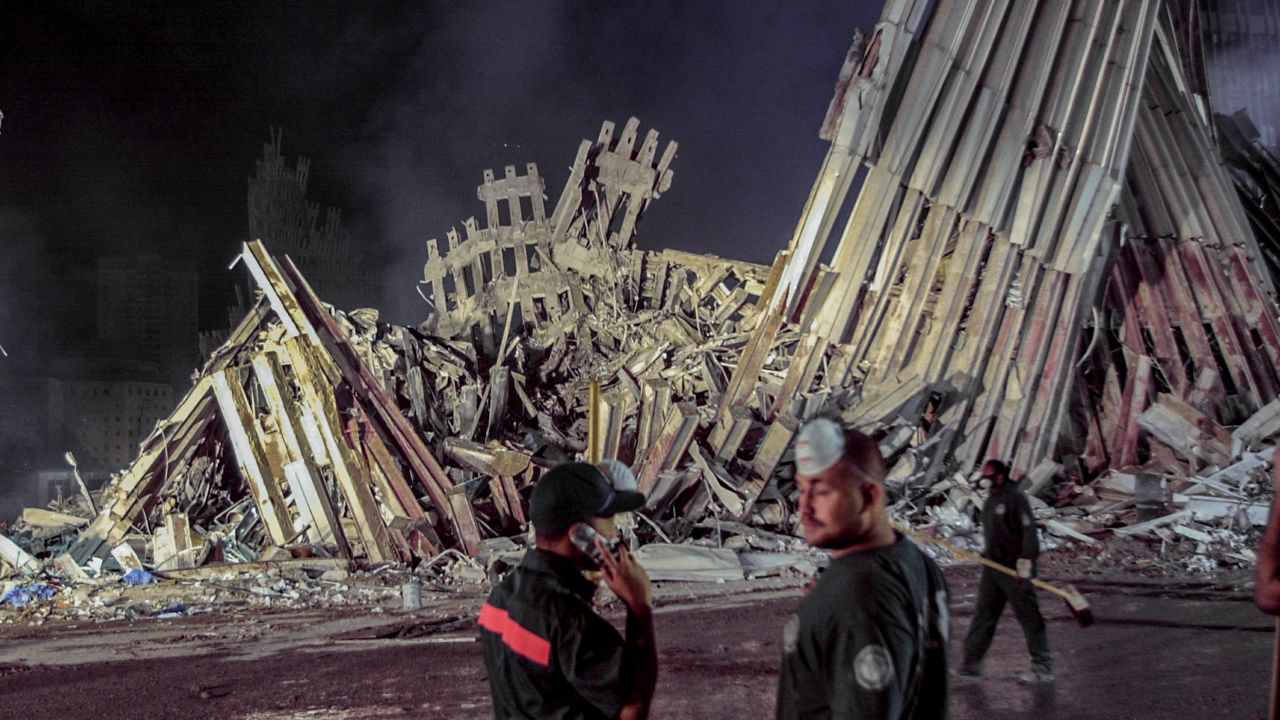On Sept. 11, 2001, 343 firefighters died, lost in the collapse of buildings, from smoke inhalation and from more of the devastating impacts that day.
Since then, another 306 firefighters, emergency service technicians, officers and paramedics have died from diseases they contracted from working the smoking pile of metal, glass and rubble at the World Trade Center site, according to the Uniformed Firefighters Association.
It is only a matter of time, according to experts, before the number of firefighters who succumb to diseases associated with the pile surpasses the death toll from the day of the attacks.
“I think within six months, we'll reach that 343 number,” said Lt. James McCarthy, president of the FDNY Uniformed Fire Officers Association.
Thirty-one firefighters who served in the aftermath of 9/11 have died from January through September of this year, according to the Uniformed Firefighters Association.
In the past few weeks, there have been 10 deaths of firefighters due to 9/11-related illnesses, which represents an increase, McCarthy said.
“The doctors have told us that between 10 and 20 years, we're going to see a spike in cancers and illnesses, and here we are 21 years out from the Trade Center and we're seeing a lot more of that,” he said.
Many experts believe we’re reaching the tipping point now due to the proliferation of new diseases that have been linked to the World Trade Center recovery efforts.
In the immediate years following the attacks, the focus was on certain conditions such as lung cancer and asthma. But now, doctors say there are more diseases linked to exposure, including autoimmune conditions, cardiovascular diseases and neurologic issues.
“Over the course of time, there's going to be conditions that you don't anticipate,” said Dr. Michael Crane, medical director of the World Trade Center Health Program at Mt. Sinai.
When the Zadroga Act was first passed in 2010, it created the World Trade Center Health Program, which provides for medical treatment and financial compensation for first responders who worked at the recovery site, as well as those exposed at the Pentagon and at the Shanksville, Pennsylvania sites.
It was created to allow for flexibility to cover conditions as they developed over time, Crane said.
This is a key part of the work of those who treat and advocate on behalf of 9/11 first responders.
“We have to convince the federal government that these increases in these [newer] diseases are not solely related to aging, and that's a hard thing to do,” said Dr. David Prezant, chief medical officer at the FDNY. “But we are working hard to try to achieve that.”
The process of getting new diseases covered under the World Trade Center Health Program include comparing the data from those enrolled in the program with those of the general population, matched for age, sex and year of diagnosis, Prezant said.
Though advocates say this process has been streamlined over the years for first responders and their loved ones, some people report issues dealing with the system when health issues arise.
Mary Jane Greco’s husband, Paul Greco, worked as a firefighter at the World Trade Center site for nine months following the attacks.
He eventually retired after a 23-year career. Shortly after, he developed shortness of breath and a cough, Mary Jane Greco said.
After being hospitalized for pulmonary hypertension, he had to remain on oxygen at all times. He later developed myeloma and lung cancer, and went into kidney failure. He also ended up losing his vision. He died on May 6, 2020.
Mary Jane Greco said the process of getting his illnesses recognized and covered under the World Trade Center Health Program was a “huge process.”
“Unfortunately, it's not made very easy for anybody to go through this,” she said.
She spent on average 10 to 15 hours a week on the phone as part of this process, she said.
“You have to go through the process of proving that you have one of these illnesses between doctor's notes, medical tests, and what have you, and then you receive your certification,” she said.
She lauded the FDNY for the resources they were able to provide during the certification process, but said it gets more complicated as retirees move to other states, which was the case for her family and for many others.
“That was a whole other ballgame trying to navigate that,” she said.
Advocates for 9/11 first responders emphasize the importance of the Zadroga Act funding, which is predicted to run out by 2025.
“One of the things that will happen if no action is taken, the program will have to stop admitting new members in October 2024,” said Ben Chevat, executive director at 9/11 Health Watch.
In order to address the impending deficit, Congress would have to pass a bill to close the funding gap. Sens. Kirsten Gillibrand and Chuck Schumer are both in support of the 9/11 Responder and Survivor Health Funding Correction Act, which would deliver $3 billion in supplemental funding for the World Trade Center Health Program.
“It's important that we get the additional funding and even just for another 10 years,” McCarthy said. “It’s essential for early detection and treatment that survivability increases for all of these people affected.”
Editor's Note: The 306 deaths from 9/11 illnesses apply to officers, paramedics and emergency service technicians as well as firefighters. An earlier version of this story said that number only applied to firefighters.



